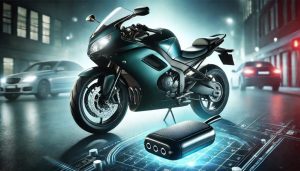

**Thorough Manual for Optimizing Your Motorcycle**
Owning a motorcycle entails more than just enjoying the excitement of the ride; it also involves taking care of your vehicle to guarantee safety, efficiency, and durability. Frequent tuning is vital to maintain the smooth operation of your motorcycle. This thorough manual will guide you through the essential steps to effectively optimize your motorcycle.
### 1. Assemble Your Tools and Materials
Prior to starting, make sure you have the essential tools and materials:
– Basic tool set (wrenches, screwdrivers, pliers)
– Spark plug socket
– Oil filter socket
– Fresh oil and oil filter
– New spark plugs
– Air filter
– Chain lube
– Brake fluid
– Coolant (if necessary)
– Tire pressure measurement tool
### 2. Assess and Replace the Oil
Consistent oil changes are vital for the health of the engine. Adhere to these instructions:
– Warm up the engine for a few moments to thin the oil.
– Shut off the engine and place an oil pan under the drain plug.
– Take out the drain plug and let the oil drain completely.
– Replace the oil filter.
– Reattach the drain plug and fill the engine with new oil according to the manufacturer’s guidelines.
### 3. Evaluate and Replace the Spark Plugs
Spark plugs are essential for engine efficiency. Here’s how to evaluate them:
– Remove the spark plug cap and utilize a spark plug socket to detach the plug.
– Examine the plug for wear or buildup. Replace if needed.
– Measure the gap with a feeler gauge and adjust if necessary.
– Install the new or previously cleaned spark plug and secure it tightly.
### 4. Clean or Swap the Air Filter
A clean air filter guarantees optimal air flow:
– Find the air filter housing and take off the cover.
– Remove the air filter and examine it for dirt or damage.
– Clean it if it can be reused or replace it with a new one if it is disposable.
– Reattach the filter and secure the housing cover.
### 5. Assess the Chain and Sprockets
A properly maintained chain provides smooth power delivery:
– Check the chain for tension and wear. Adjust tension according to the manual.
– Clean the chain with an appropriate cleaning brush and solution.
– Apply chain lubricant generously to the chain.
– Inspect the sprockets for wear and replace if needed.
### 6. Review the Brakes
Brakes are essential for safety:
– Examine the brake pads for wear and replace them if they are worn thin.
– Inspect brake discs for any signs of damage.
– Check the brake fluid level and top up if necessary.
– Bleed the brakes if the fluid is aged or if air bubbles are present.
### 7. Inspect the Tires
Tires are your connection to the roadway:
– Use a gauge to check tire pressure and inflate to the recommended PSI.
– Look over the tread for wear and any lodged objects.
– Inspect for cracks or bulges in the sidewalls.
### 8. Review the Battery
A functioning battery ensures dependable starts:
– Check the battery terminals for corrosion and clean them if needed.
– Examine the battery charge and recharge if required.
– Confirm that the battery is securely mounted.
### 9. Check Cables and Controls
Ensure all controls operate smoothly:
– Inspect throttle and clutch cables for unhindered movement.
– Lubricate cables if they feel stiff.
– Adjust cable tension if required.
### 10. Test Ride and Final Adjustments
Once you finish the tune-up, take your motorcycle out for a test ride:
– Be aware of any strange noises or vibrations.
– Ensure all controls respond correctly.
– Make any required adjustments after the ride.
### Conclusion
Regularly enhancing your motorcycle not only improves its performance but also prolongs its lifespan and guarantees your safety on the road. By following this thorough manual, you can maintain your motorcycle in excellent shape and enjoy many more enjoyable miles of riding. Remember to refer to your motorcycle’s manual for tailored maintenance schedules and procedures specific to your model.






